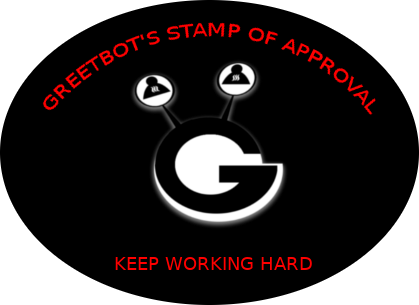I met a new language (Esperanto)
This week I met this language, and I came here to talk a little about it
What is the writing system used in the language?
Esperanto uses the Latin alphabet, as in Portuguese with some differences. This language does not have the letters q, w, x, and y, but there are others like ĉ, ĝ, ĥ, ĵ, ŝ e ŭ.
Here's a good explanation:
Every word is read as it is written.
Each letter has a single sound and each sound corresponds to a single letter.
There are no dumb or dead letters.
Each vowel is part of a single syllable.
Every word with more than one syllable (and that is not apostrophada) is paroxítona, that is, the penultimate syllable is the strongest one.
The circumflex accent we place on the "o" end of each word is just to remind you not to pronounce it as "u".
Symbols of Esperanto
[IMG] [/IMG]
[/IMG]
The First Artificial Language?
Esperanto is practically the first artificial language that has had some success. Zamenhof began working on what became Esperanto in 1872, but unfortunately he can not publish it until 1887.
In the meantime, the German priest Johann Martin Schleyer (1831 - 1912) was beginning to create his own language, volapük, in 1879, and he published it in 1880 - seven years before Zamenhof published Esperanto.
Volapük was popular for a few years, but when Esperanto was published, many people left Volapük to learn Esperanto, since Esperanto is much easier to learn. Today, volapük is practically extinct and has only about 20 speakers in the world.
The language spread quickly because it was quite simple, and because there was already a lot written in Esperanto (some that Zamenhof had already written and others had translated while waiting for Tzar's censors to release him).
Around 1905, there was the First Esperanto Congress (Lang Universala Kongreso) in Boulogne-sur-Mer in France.
World War I began in 1914 and Zamenhof was twice awarded the Nobel Peace Prize. Esperanto was part of the school curriculum in China, Samos and Macedonia, and there was even a coin in Esperanto (spesmilo) Unfortunately, Zamenhof passed away in 1917 and did not live to see the end of the war in 1918.
It was after World War I that the popularity of Esperanto increased.
The horrors of war created in people the desire for universal peace. Esperanto seemed a great hope that a universal language would facilitate communication between people and thus avoid a new war.
The League of Nations - the forerunner of the United Nations urged its members to use Esperanto as a second language, and some of the most important scientific societies suggested that Esperanto be used for future scientific communications. For some time the Esperanto seemed to become an international language for communication, science and of course, peace - this time, the 1920s was considered the Golden Age of Esperanto.
But the great dictators who emerged at the outset of World War II-Adolf Hitler and Joseph Stalin-banished Esperanto.
Many Esperantists, including members of the Zamenhof family, died in Nazi death camps. The League of Nations, along with many important Esperanto associations, did not survive the war.
Since then, the Esperanto movement has been restored, although it has not reached the pre-World War II reach.
Although the United Nations does not support Esperanto in the same way that the League of Nations did, some agencies still support the language.
The Internet and organizations such as Pasporta Servo, (which helps Esperanto speakers travel with other Esperantists throughout the world) have helped the Esperantists to keep in touch in the same way they used to.
Esperanto today exists thanks to the enthusiasm of its speakers, without the support of any nation or some great international organization.
A language
created to facilitate communication among the peoples of the whole world. More than one hundred years of practical use have made Esperanto a living language capable of expressing any nuance of human thought
International and neutral.
Esperanto does not belong to a particular people or country, but to all the people of the whole world. It is not, therefore, the vehicle of any tendency of cultural hegemony, but a way of establishing a bridge between cultures.
Easy.
Esperanto has an extremely flexible structure, as well as an international vocabulary. All this contributes to - as numerous scientific-pedagogical works demonstrate - much easier to learn than any other language.
A second language for all. The basic idea of Esperanto was launched by the Polish physician at the age of 28, Dr. Lázaro Zamenhof, in 1887, more than 125 years ago. Since then, the planned language project has become a living language, with its own culture, but international, and even with native speakers.
Esperanto does not belong to any nation and belongs to everyone. The proposal of Esperanto is that each people continue to speak their mother tongue and use Esperanto in international communications.
There are over 35,000 books and 2,000 periodicals in Esperanto. A large number of great literary works have already been translated into Esperanto, from the Bible and the Koran to the works of Dante, Camoes, and Shakespeare. Modern authors such as Garcia Lorca, Jorge Luis Borges and Jorge Amado also have translations in Esperanto. From Brazilian literature, books such as Dom Casmurro, Memórias posstumas de Brás Cubas, Dried Lives, and The Alchemist have widely praised translations. Even the biography of Pele has a translation for Esperanto, autographed by the idol himself.
The Esperanto Museum, founded in 1927 and now the department of the National Library of Austria, has more than 35,000 books and 2,000 periodicals in its collection, as well as tens of thousands of manuscripts, pamphlets, photographs and related objects. The catalog of the World Association of Esperanto, based in the Netherlands, has nearly 7,000 books and other media for sale. In addition, in various portals and websites, such as the Public Domain portal of the Brazilian government, it is possible to obtain from hundreds to thousands of works in and about Esperanto.
There are still many works written originally in Esperanto. Some of these works have become so important that they have been translated into several other languages, as in the case of the modernist epic poem "La infana raso" by Scottish artist William Auld, whose original work in Esperanto earned him recurring awards nominations Nobel literature.
Esperanto is recognized by the UN and UNESCO. Since its foundation in 1887, Esperanto has won speakers from many different parts of the world, who contributed greatly to its foundation and evolution as a language.
There are many different manifestations of culture in Esperanto, from literature to cinema. Thousands of Internet pages and social networks, daily radio broadcasts and meetings and congresses, whether regional or worldwide, guarantee an intense exchange of ideas and feelings between people.
All this proves that Esperanto has become and is a living language.
Today, mainly in Europe and China, Esperanto is a subject of study in many schools and universities.
Poland, one of the largest universities in the country, Adam Mickiewicz University in Poznan offers a three-year postgraduate course in the field of linguistics given entirely in Esperanto.
In Hungary, the Eötvös Loránd University Advanced Language Teaching Center in Budapest is responsible for the certification of Esperanto proficiency for the whole European Union. In San Marino, the International Academy of Sciences San Marino, one of the universities of that country, has Esperanto as the only official language.
curiosities about Esperanto
1-Artificial: Esperanto is an artificial language created by Ludwik Lejzer Zamenhof in 1887.
2-Babel: Zamenhof lived in Bia? Ystok, in the Russian Empire, now Poland, where people of different peoples lived, speaking many languages. The difficulty of communication motivated him to create a neutral auxiliary language.
3-Previous: Zamenhof developed the first version of Esperanto, "lingwe universala", still during adolescence.
4-Destruction: While studying medicine in Moscow, Russia, the father of Ludwik Zamenhof burned all his manuscripts on Esperanto.
5-Congress: The first Universal Esperanto Congress took place in 1905 in Boulogne-sur-Mer, France, with almost 1,000 participants.
6-Brazil: The following year, the first Esperanto group was founded in Brazil, in Campinas (SP).
7-Persecution: Hitler and Stalin persecuted and killed Esperantists in countries dominated by Germany and Russia. The Zamenhof family was decimated
8-Recognition: In 1954, the United Nations Educational, Scientific and Cultural Organization formally recognized the value of Esperanto for education, science and culture.
9-Encyclopedia: In 2017, Wikipedia has more than 237,000 articles in Esperanto, a number greater than that of articles in many languages, such as Danish, Hebrew and Latin.
10-Tonic: In Esperanto, the tonic syllable is always the penultimate (paroxitone), unless the word has only one vowel or the final vowel has been omitted.
11-Rules: The grammar of Esperanto follows only 16 basic rules.
12-Letters: Esperanto is written through a modified version of the Latin alphabet, to which were included six letters with diacritical signs:?,?,?,?,?,? and ?.
13-Publications: There are more than 50,000 books published in Esperanto, including originals and translations, as well as more than a hundred regularly edited magazines.
14-Easy: Esperanto was created to be an easy-to-learn language, with no irregular verbs, complicated conjugations and two-way words.
15-Speakers: The number of Esperanto speakers is uncertain. It is estimated that there are 200 thousand people fluent in the language and up to 10 million initiates .
never heard of it, but it seems to be a legal language.
I do not know if this language will be used more as a second language, maybe some language based on it.
thanks for reading
@lonelyprince, a very warm welcome to you! Let the steemit go on. Thanks for sharing such a beautiful post. Our world is full of different people, different languages, different color, different culture which makes it more unique and teach us something new everyday. Keep up the good work.
Congratulations @lonelyprince! You have completed some achievement on Steemit and have been rewarded with new badge(s) :
Click on any badge to view your own Board of Honor on SteemitBoard.
For more information about SteemitBoard, click here
If you no longer want to receive notifications, reply to this comment with the word
STOPHi. I am @greetbot - a bot that uses AI to look for newbies who write good content.

I found your post and decided to help you get noticed.
I will pay a resteeming service to resteem your post,
and I'll give you my stamp of automatic approval!
Resteemed by @resteembot! Good Luck!
The resteem was payed by @greetbot
Curious?
The @resteembot's introduction post
Get more from @resteembot with the #resteembotsentme initiative
Check out the great posts I already resteemed.
Welcome on board!
Well collected all the facts about Esperanto. Thank you for spreading the word! Ĉu vi mem babilas en Esperanto?
By the way Zamenhof was NOT Polish physician. As you mentioned further down in your article this part of his land belonged at this time to the Russian Empire.
Yes. Because Poland has been occupied. Question? If ex. Germany attack the Netherlands will the Dutch become Germany?
https://eo.wikipedia.org/wiki/Dispartigoj_de_Pollando-Litovio
https://eo.wikipedia.org/wiki/Pollando#Dispartigoj_kaj_la_sekvo
Interesting. I come from Northern Germany. Once this part belongs to the Danish empire than to to the crown of Sweden. So am I one of those citizens?
Thanks for the info